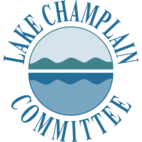Looking Beyond Phosphorus
October 2015

The summer of 2015 saw extensive disgusting blue green algae blooms in northeastern bays of Lake Champlain, but much has occurred on the recent policy front to lend hope about the future of Lake Champlain. Vermont passed a new clean water bill whose implementation should improve many practices around the state that affect water quality. The EPA released a new TMDL that will hold the state and municipalities accountable for reductions in phosphorus loading. Yet, even if these policies are 100% effective we will still see algae blooms in the lake going forward.
The 2015 blooms were not unique to Lake Champlain. Lake Erie saw perhaps their largest blue green algae blooms in history, spreading as far east as Cleveland. Seneca Lake, the largest and deepest of New York’s Finger Lakes reported its first ever confirmed algae blooms, as did two other Finger Lakes. Blooms struck Boston’s Charles River. A bloom on Lake Atitlan in Guatemala appears to be the first since 2009. Satellite photos of a massive blooms in the Baltic Sea look like an abstract painting. It’s not all blue-green algae; an unusually large and toxic diatom bloom persists in the Pacific Ocean. And on, and on.
When we see blue-green algae blooms increasing in lakes around the world, it’s a mistake to look at local policies as the critical driving factor. National and global agricultural policies have emphasized efficiency at the expense of conservation. For decades we have mined phosphorus and shipped it all around the world for use in lawn and crop fertilizer. Our reliance on fossil fuels have led to increases in global temperatures, and blue-green algae like it hot.
A literature review by the Water Research Foundation (WRF) found that different types of blue green algae differed in their response to changing environmental conditions. Anabaena was more sensitive to additional nutrients, but Microcystis was more sensitive to changes in temperature. Both genera exist, bloom, and compete with one another in Lake Champlain.
Nutrients and temperature interact in complex sometimes counterintuitive ways and those interactions vary depending on lake type. The WRF researchers found an increase in water temperature from 75.2 degrees to 76.6 increased the probability of algae blooms by 5%. The effect was roughly equivalent to what would happen if the phosphorus concentration in the Main Lake doubled. In one modelling run they found that decreasing nutrients in already nutrient rich systems increased algae blooms if temperatures also increased.
Meanwhile, surface water temperatures in Lake Champlain have been steadily rising and this year set records. The average August surface water temperature has increased as much as 6.8 degrees since 1984. On September 8th Lake Champlain was 76 degrees according to the National Weather Service, the warmest the lake has been that late in the season since records began in 1972. The lake was still over 70 degrees as of September 22nd.
Temperature isn’t the only variable other than phosphorus driving more algae blooms. Nitrogen is gaining more and more attention as a driver of blooms, and even more importantly as driver of toxicity within blooms. Invasive species can cause changes in the food web that lead to greater blue green algae abundance. One paper even suggested that lake shore land use was a better predictor of some blue green algae dominance than nitrogen or phosphorus. No one dismisses the idea that phosphorus plays a role in controlling algae blooms, but it is a mistake to look at phosphorus as the only important variable.
In short, there are many factors leading to an increase in algae blooms, not all of which are captured by current local policy initiatives. This should not be seen as a critique of those initiatives. Limiting phosphorus is an imperfect tool for controlling algae blooms, and such efforts fail more often then they succeed. Yet, they succeed more often than any other management strategies that have been attempted. We need to take steps to reduce runoff from our local watershed, if only as a buffer against the national and international policies driving climate change and industrial agriculture, but we need to take these steps with full awareness of their limits. Failure to recognize these limits leads to accusations and finger-pointing when the policies make a dent in the problem but the algae blooms still return.
Lake Look is a monthly natural history column produced by the Lake Champlain Committee (LCC). Formed in 1963, LCC is the only bi-state organization solely dedicated to protecting Lake Champlain’s health and accessibility. LCC uses science-based advocacy, education, and collaborative action to protect and restore water quality, safeguard natural habitats, foster stewardship, and ensure recreational access.
Get involved by joining LCC using our website secure form (at www.lakechamplaincommittee.org), or mail your contribution (Lake Champlain Committee, 208 Flynn Avenue - BLDG 3 - STUDIO 3-F, Burlington, VT 05401), or contact us at (802) 658-1414, or lcc@lakechamplaincommittee.org for more information.
